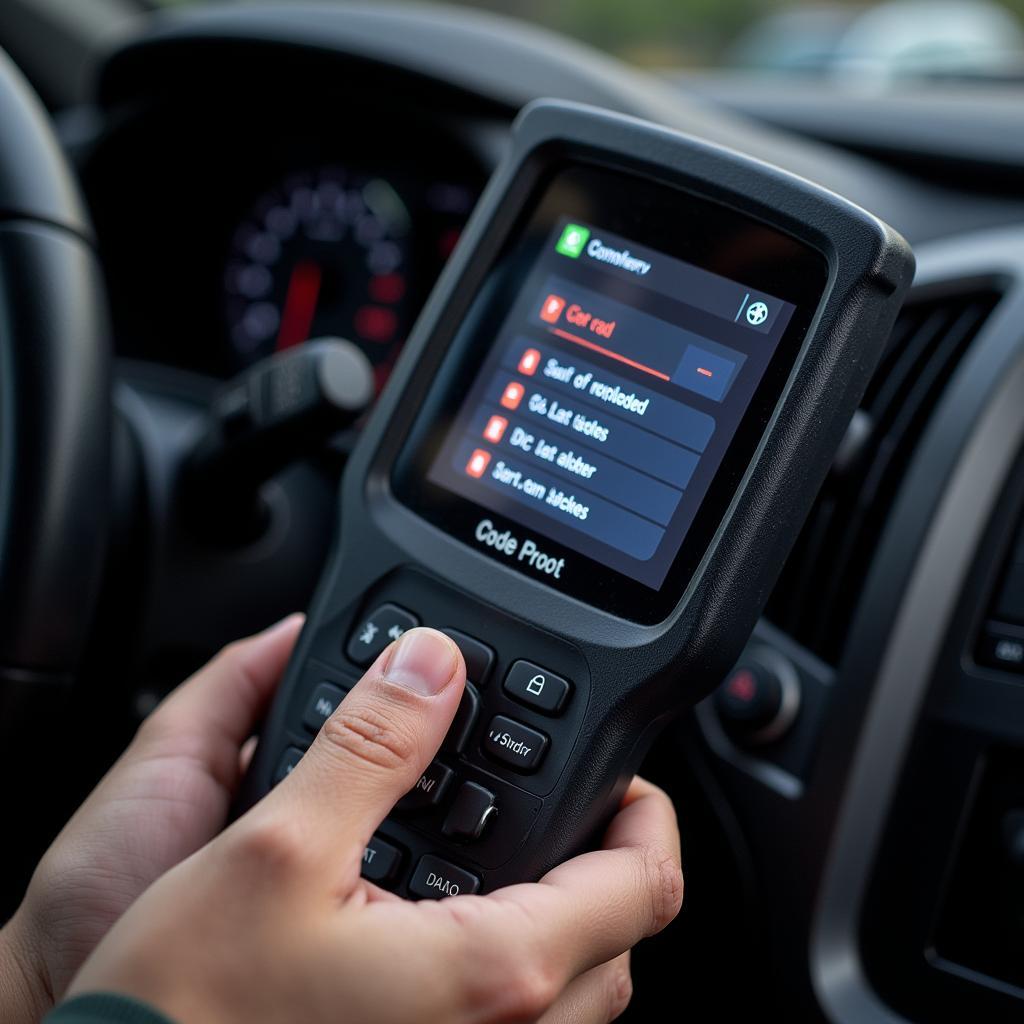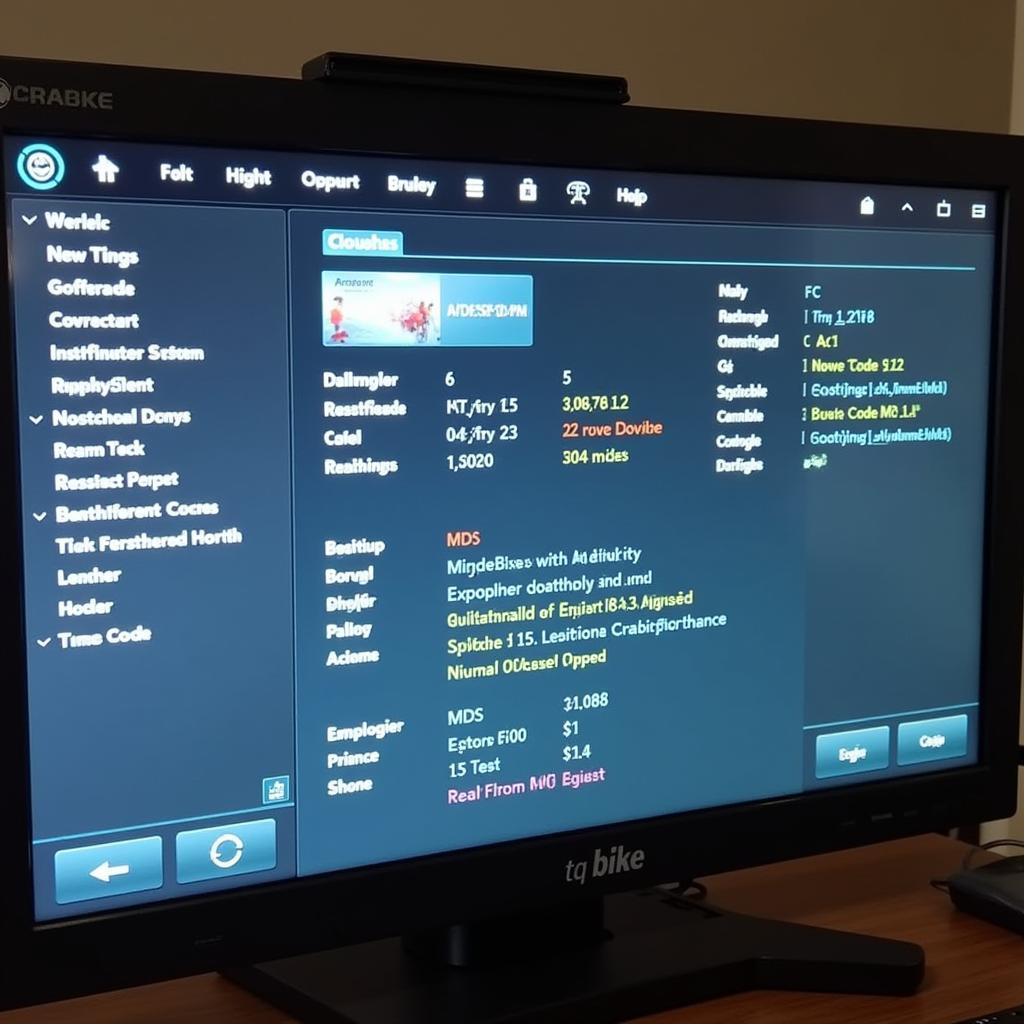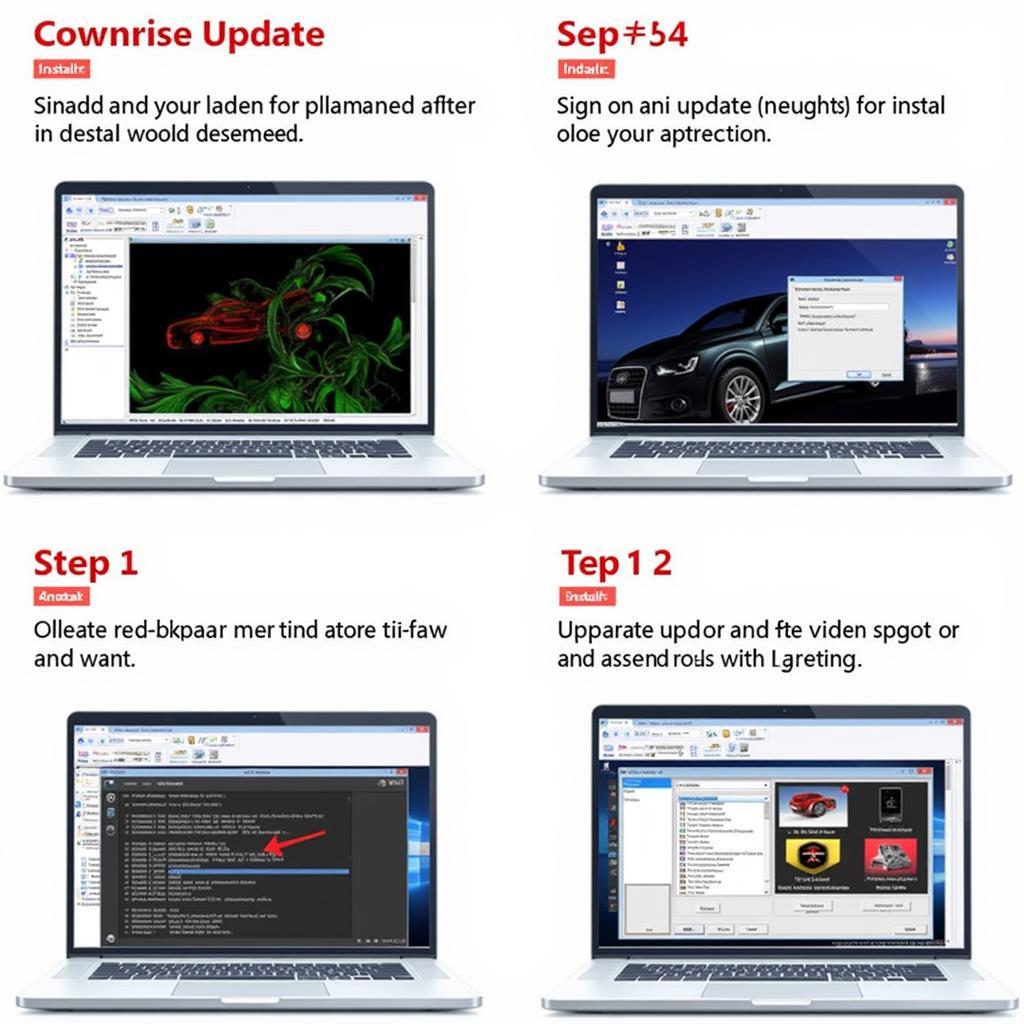A properly functioning restraint system is paramount for vehicle safety. Malfunctions can leave drivers and passengers vulnerable in a collision. A Restraint System Diagnostic Tool is crucial for identifying and resolving these issues, ensuring the airbags, seatbelts, and other safety components operate as intended. Understanding how to effectively use these tools can be the difference between a safe vehicle and a potential hazard. Similar to a car full system diagnostic tool, a dedicated restraint system diagnostic tool offers specialized functionalities.
Modern vehicles rely on complex electronic systems to manage safety features, and the restraint system is no exception. These systems are constantly monitoring various sensors and components, ready to deploy life-saving measures in milliseconds. Diagnosing faults within these intricate networks requires specialized equipment – the restraint system diagnostic tool. These tools allow technicians to delve into the system’s data, pinpoint the source of a problem, and ensure proper repairs.
Why is a Restraint System Diagnostic Tool Essential?
A restraint system diagnostic tool goes beyond basic code reading. It offers a deep dive into the system’s operational status, allowing you to:
- Identify Specific Fault Codes: Decipher the meaning behind cryptic codes, isolating the precise component or circuit causing the issue. This prevents unnecessary guesswork and part replacement.
- Access Live Data Streams: Monitor real-time sensor data to observe the system’s behavior during operation, aiding in identifying intermittent faults that might be missed during a static scan.
- Perform Actuation Tests: Actively test individual components such as airbags, seatbelt pretensioners, and sensors to confirm their functionality and responsiveness.
- Reset the System: After repairs are completed, a restraint system diagnostic tool can clear fault codes and reset the system, ensuring proper operation.
Understanding Different Types of Restraint System Diagnostic Tools
Not all restraint system diagnostic tools are created equal. They range from basic code readers to sophisticated, multi-system scanners. Choosing the right tool depends on your needs and budget.
- Basic Code Readers: These entry-level tools primarily retrieve and display fault codes. They are a cost-effective option for DIY enthusiasts and small workshops.
- Dedicated Restraint System Scanners: These tools are specifically designed for diagnosing restraint systems. They offer advanced features like live data streaming, actuation tests, and system resets.
- Multi-System Scanners: These comprehensive tools can diagnose a wide range of vehicle systems, including the restraint system. They represent a significant investment but provide a complete diagnostic solution. For example, you can also use a mitsubishi srs diagnostic tool for specific Mitsubishi models.
How to Choose the Right Restraint System Diagnostic Tool
Selecting the appropriate tool involves considering several factors:
- Vehicle Compatibility: Ensure the tool supports the make, model, and year of the vehicle you intend to diagnose.
- Features: Consider the features you require, such as live data, actuation tests, and bi-directional control.
- User Interface: A user-friendly interface with clear navigation and intuitive controls simplifies the diagnostic process.
- Software Updates: Regular software updates are crucial for staying current with the latest vehicle technologies and diagnostic procedures. Tools that offer regular updates are a worthwhile investment.
What are Common Restraint System Issues?
Common problems within the restraint system often involve:
- Faulty Airbag Sensors: Impact sensors or seat occupancy sensors can malfunction, preventing airbag deployment or causing unintended deployment. A restraint system diagnostic tool can pinpoint the faulty sensor.
- Wiring Issues: Damaged or corroded wiring can disrupt communication within the system, leading to various malfunctions. The diagnostic tool helps trace the source of wiring problems.
- Clockspring Issues: The clockspring, which allows the steering wheel to rotate while maintaining electrical connections, can fail, affecting airbag and horn functionality. A dedicated tool helps diagnose and confirm clockspring failures.
- Airbag Module Malfunctions: The airbag module, the brain of the system, can malfunction due to various reasons, including crash data storage. Specialized tools can access and reset the module, or in some cases, reprogram it. A honda srs diagnostic tool is a good example of a specialized tool.
Using a Restraint System Diagnostic Tool: A Step-by-Step Guide
- Connect the tool to the vehicle’s diagnostic port (OBD-II).
- Turn the ignition on, but do not start the engine.
- Select the “Restraint System” or “SRS” option on the tool’s menu.
- Read the fault codes displayed on the screen.
- Consult the vehicle’s service manual to interpret the codes and determine the appropriate repair procedure. This step ensures accurate diagnosis and targeted repairs.
“A quality restraint system diagnostic tool is an invaluable asset for any technician working on modern vehicles. It saves time, reduces guesswork, and ensures the safety of both the technician and the vehicle owner,” states Michael Davis, Senior Automotive Electronics Engineer.
Beyond Diagnostics: Maintaining Your Restraint System
Regular maintenance plays a vital role in preventing restraint system issues. This includes:
- Visual inspections of wiring and connectors for damage or corrosion.
- Checking for deployed airbags and replacing them promptly.
- Ensuring seatbelts are functioning correctly and free from damage.
“Preventive maintenance is key to avoiding costly repairs down the line. A little proactive care can go a long way in ensuring the long-term reliability of your vehicle’s restraint system,” adds Maria Sanchez, Automotive Safety Systems Specialist. Similar to tools like the toyota diagnostic scanner tool reader code engine abs srs airbag, maintaining your restraint system is crucial for safety.
Conclusion
A restraint system diagnostic tool is essential for anyone working on modern vehicle safety systems. Understanding how to use this tool effectively empowers technicians and car owners to accurately diagnose and repair faults, ensuring the proper functioning of this critical safety feature. If you need help choosing the right diagnostic tool or have questions about your vehicle’s restraint system, connect with us at ScanToolUS. We are available at +1 (641) 206-8880 or visit our office at 1615 S Laramie Ave, Cicero, IL 60804, USA. Our team of experts is ready to assist you. Investing in a reliable airbag abs diagnostic tools is crucial for ensuring safety on the road.



